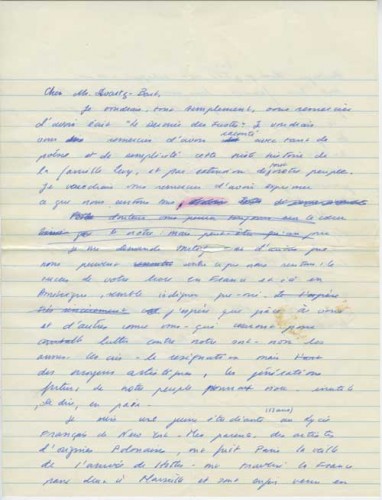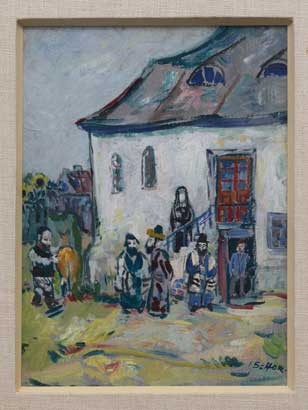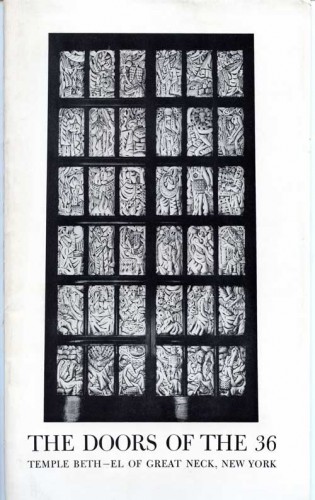In a documentary about 2014 Nobel Prize for literature author Patrick Modiano, historian Henry Rousso says, “Il a..interiorisé quelque chose qu’il na pas vécu”–“he interiorized something he did not live through.” This is the story of the way in which trauma, here the historical trauma of the German Occupation of France during the Second World War, filters through generations and shapes creativity and thought.
The texture of the world at every given moment is riven with traumas, personal, political, historical and at times they compete in ways that compound the psychic damage.
For my sister Naomi and me, my father’s Hasidic background, our parents’ experience of the Second World War, their massive personal losses in the Shoah and their miraculous survival were the past we had not lived but that we lived with, that we interiorized.
Today October 10, 2014 would have been my sister’s seventy-first birthday. She died in 2001 at the age of 58, which seems very young, particularly since I was the younger sister but am now older than that age, so I like to mark her birthday each year in some way.

Ilya Schor, The Tzadik, 1950s, wood engraving
A few weeks ago I found a torn scrap of paper among a box of her things: it is the draft of a letter she wrote to André Schwartz-Bart, the author of the 1959 novel Le Dernier des Justes (The Last of the Just). I have not read the novel but perhaps because of Schwartz-Bart’s book and the discussions that took place around it in my childhood, and in particular because the theme of the novel and its title was the theme of a major work from 1956 by my father Ilya Schor, I am haunted by the Talmudic notion of the Lamed Vav Tzadikim, the thirty-six “”hidden righteous ones,” whose existence redeems and preserves the world, their identities hidden to others and even, perhaps most especially, to themselves.


My sister’s handwriting was distinctive and sometimes hard to decipher, this letter for some reason more so than usual: here it is in French and then in English, with cross outs left intact to show the process of writing and certain passages marked […] as undecipherable by me.
Cher Mr. Schwartz-Bart,
Je voudrais, tout simplement, vous remercier d’avoir écrit “Le Dernier des Justes,” Je voudrais vous remercier d’avoir raconté avec tant de poésie et de simplicité cette triste histoire de la famille Lévy, et par extension de tout notre peuple. Je voudrais vous remercie d’avoir exprimé ce que nous sentons tous.
Je me demande […] si d’autres que nous peuvent sentir ce que nous sentons. Le succès de votre livre en France et ici en Amérique semble indiquer que oui. J’espère que grace à vous et d’autres comme vous qui auront pu lutter contre notre sort – non les […], les cris, la résignation, mais l’art des moyens artistiques, les générations futures de notre peuples pourront vivre, inutile de le dire, en paix.
Je suis une jeune étudiante (17 ans) au Lycée Français de New York. Mes parents, des artistes d’origine Polonaise, ont fui Paris la veille de l’arrivée de Hitler, ont traversé la France, passe deux ans à Marseille et sont enfin venu en Amérique. Eux, ils ont échappé mais toute leur famille, leur amis ont péri. Mon père peint son petit village polonaise avec sa synagogue, ses hommes, ses femmes: je connais bien le visage de mes ancêtres et confrères disparus et je ne peus dire le vide que je ressens à ne pouvoir jamais jamais connaitre les modèles dont s’inspire mon père.
Mon père travaille aussi fait aussi des objets religieux et décoratifs en argent, parmi eux il a fait une porte pour une synagogue dont le thème était les Lahmed Vov, les 36…
J’essaye seulement de vous dire que je suis sure que partout où un cœur juif bat votre livre sera chéri et pleure là-dessus.
Respectueusement
Naomi Schor
Ilya Schor, 1950s, Steps to Women’s Gallery of Synagogue at Zloczow. Gouache.
Catalogue for Ilya Schor, 1956, The Doors of the 36, Temple Beth-El of Great Neck, NY
Dear Mr. Schwartz-Bart,
I would very simply like to thank you for having written “The Last of the Just”, I would like to thank you for having told with so much poetry and simplicity this sad story of the family Levy and, by extension, that of our whole people. I would like to thank you for expressing what we all feel.
I wonder if others can feel what we feel. The success of your book in France and in America seems to indicate yes. I hope that thanks to you and others like you who have been able to fight against our fate, not the …, not the cries, the resignation, but [through] artistic means future generations of our people will be able to live, needless to say, in peace.
I am a young schoolgirl (17 years old) at the Lycée Français de New York. My parents, artists of Polish origin, fled Paris just before the arrival of Hitler, they crossed France, spent two years in Marseille and finally arrived in America. They survived but their whole families, their friends perished. My father paints his small Polish village with its synagogue, its men, its women: I know well the face of my lost ancestors and brethren and I cannot express the emptiness I feel to never never be able to know the models that inspire my father.
My father also makes religious and decorative objects out of silver, among these he made a door for a synagogue, whose theme was the Lahmed Vov, the 36…
I just want to tell you that I am sure that everywhere a Jewish heart beats your book will be cherished and wept over.
Respectfully
Naomi Schor
I don’t know if my sister sent the letter. Based on its contents it was written between her seventeenth birthday October 10, 1960 and my father’s death in June 1961, because in the letter she refers to my father as living.

Ilya Schor and Naomi Schor, Provincetown, Summer 1960, Photo: Ryszard Horowitz



